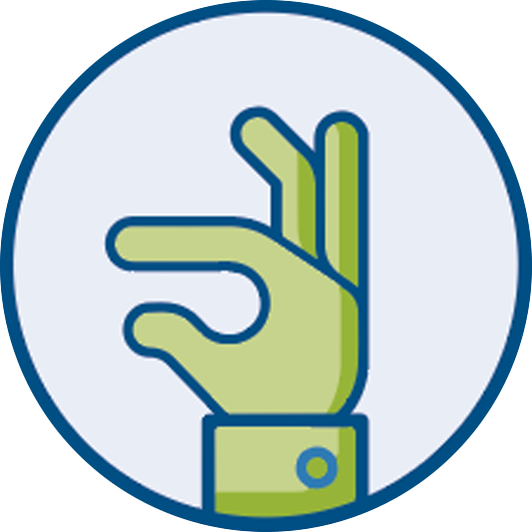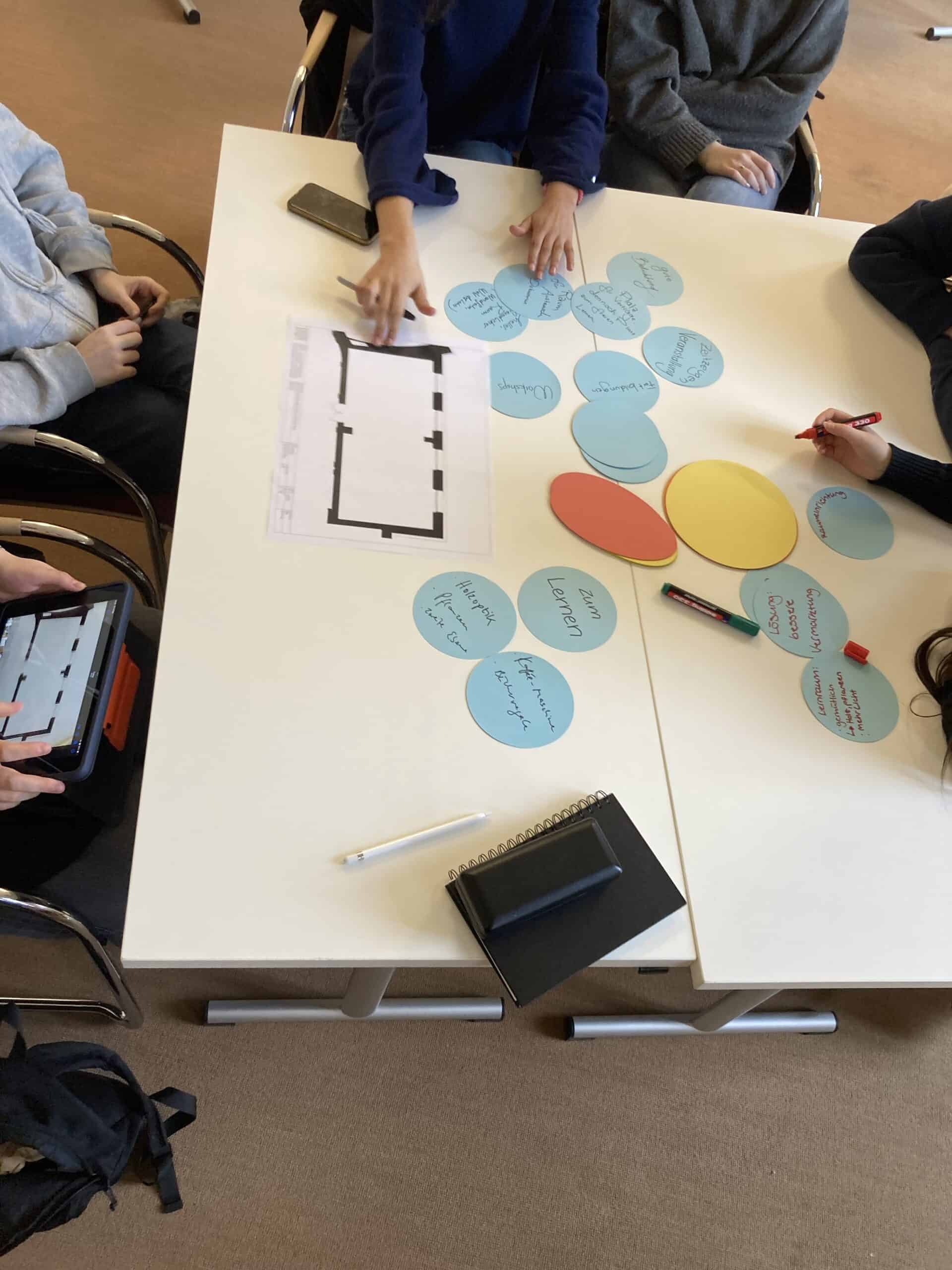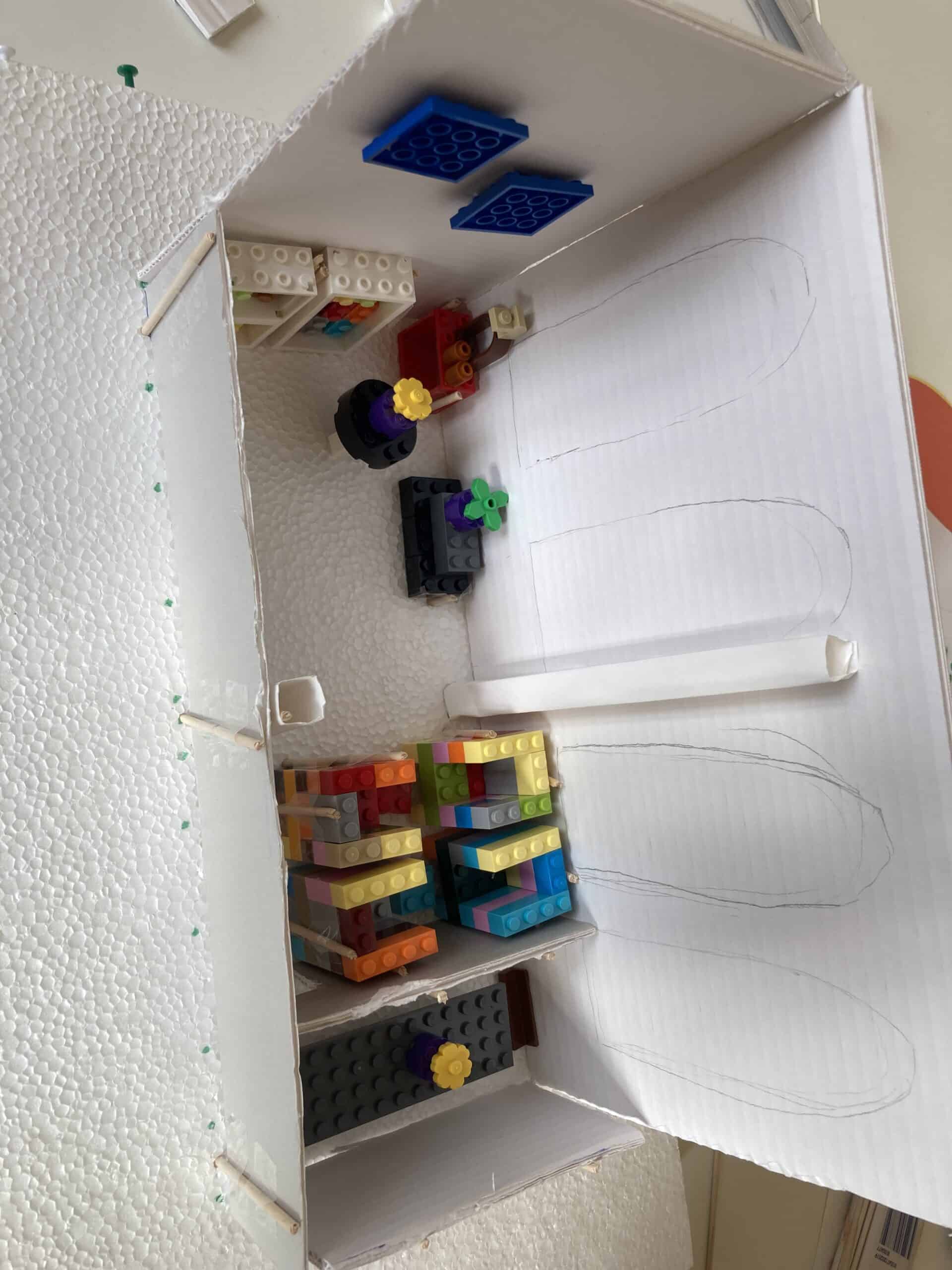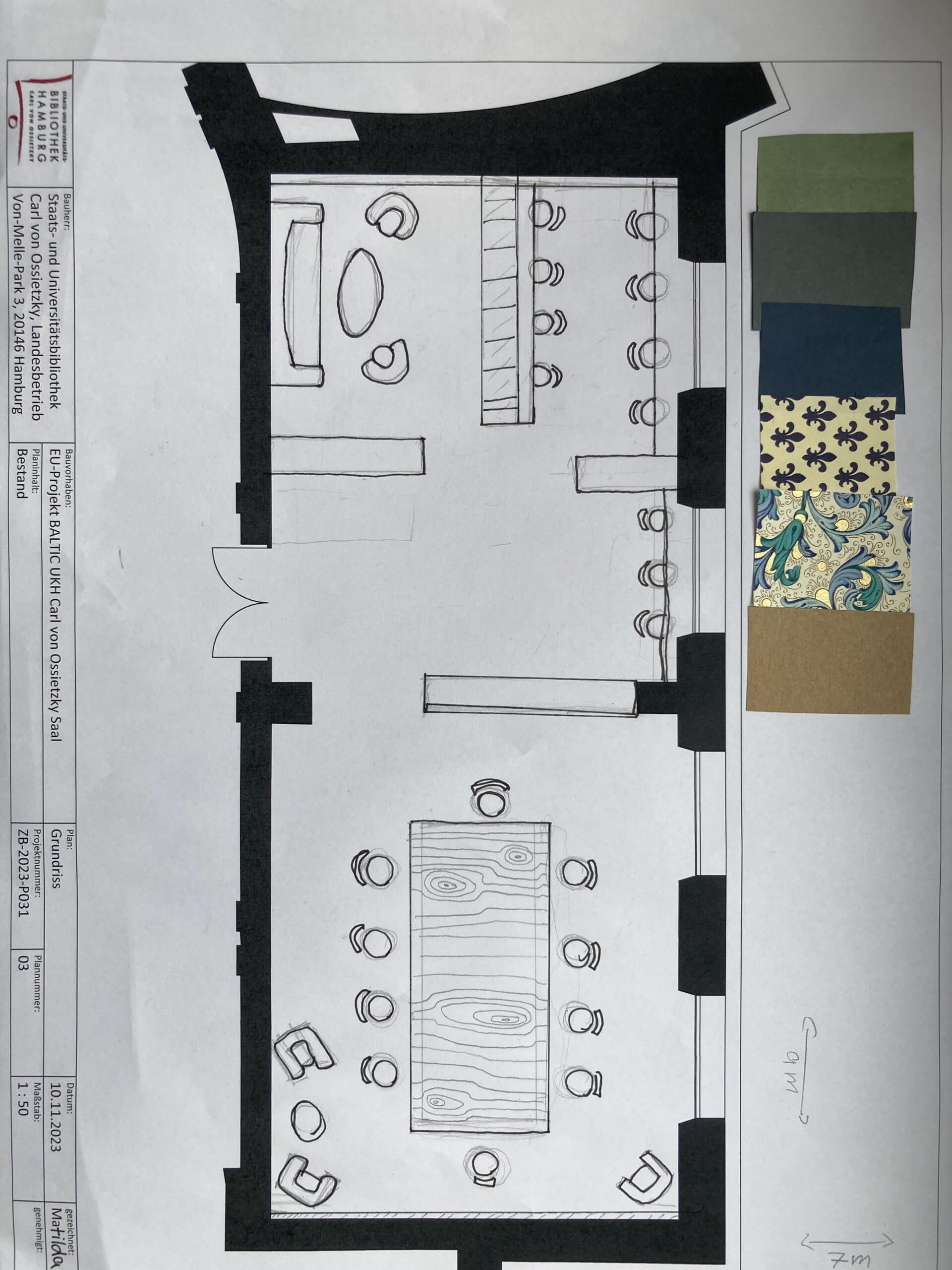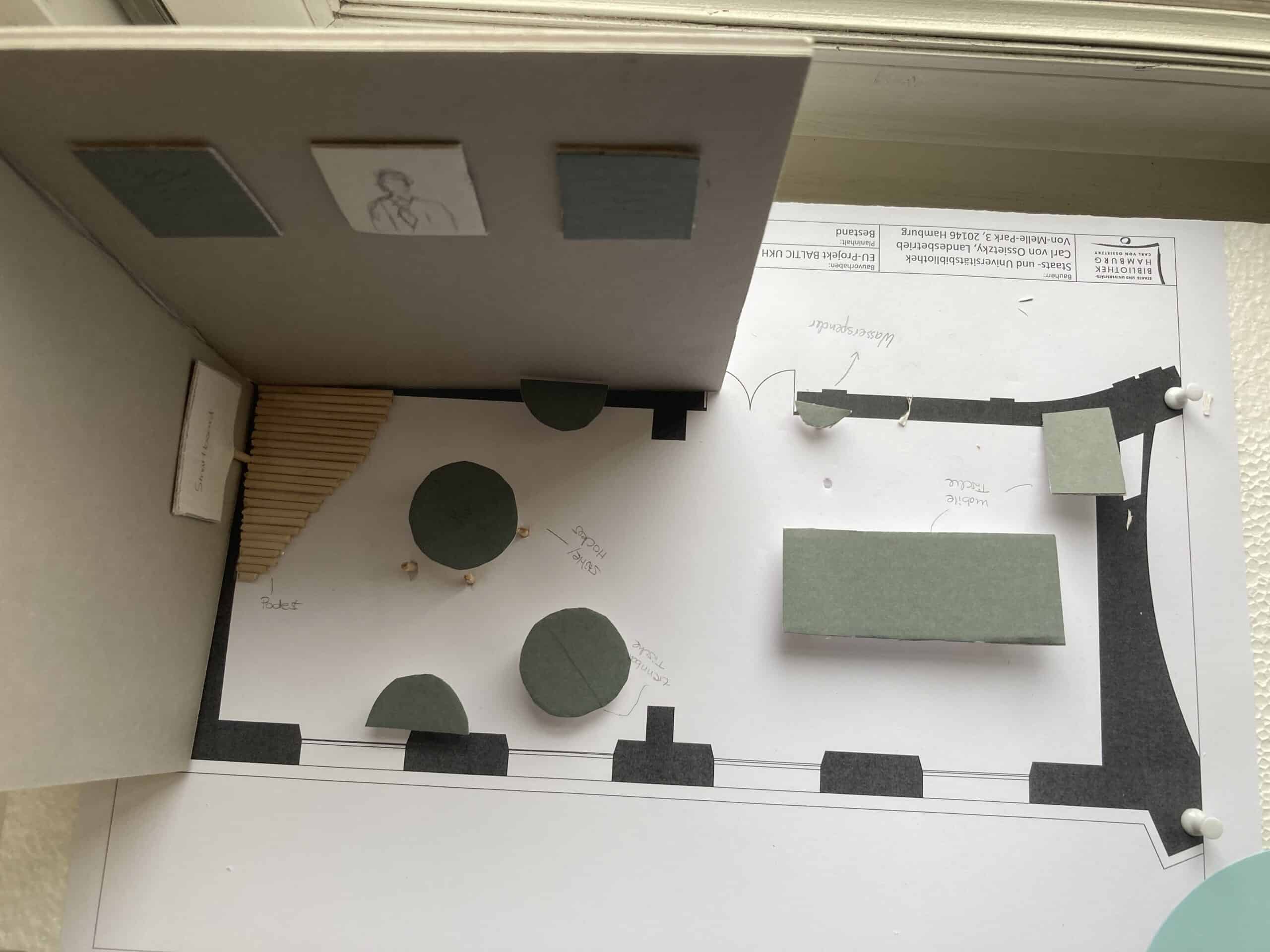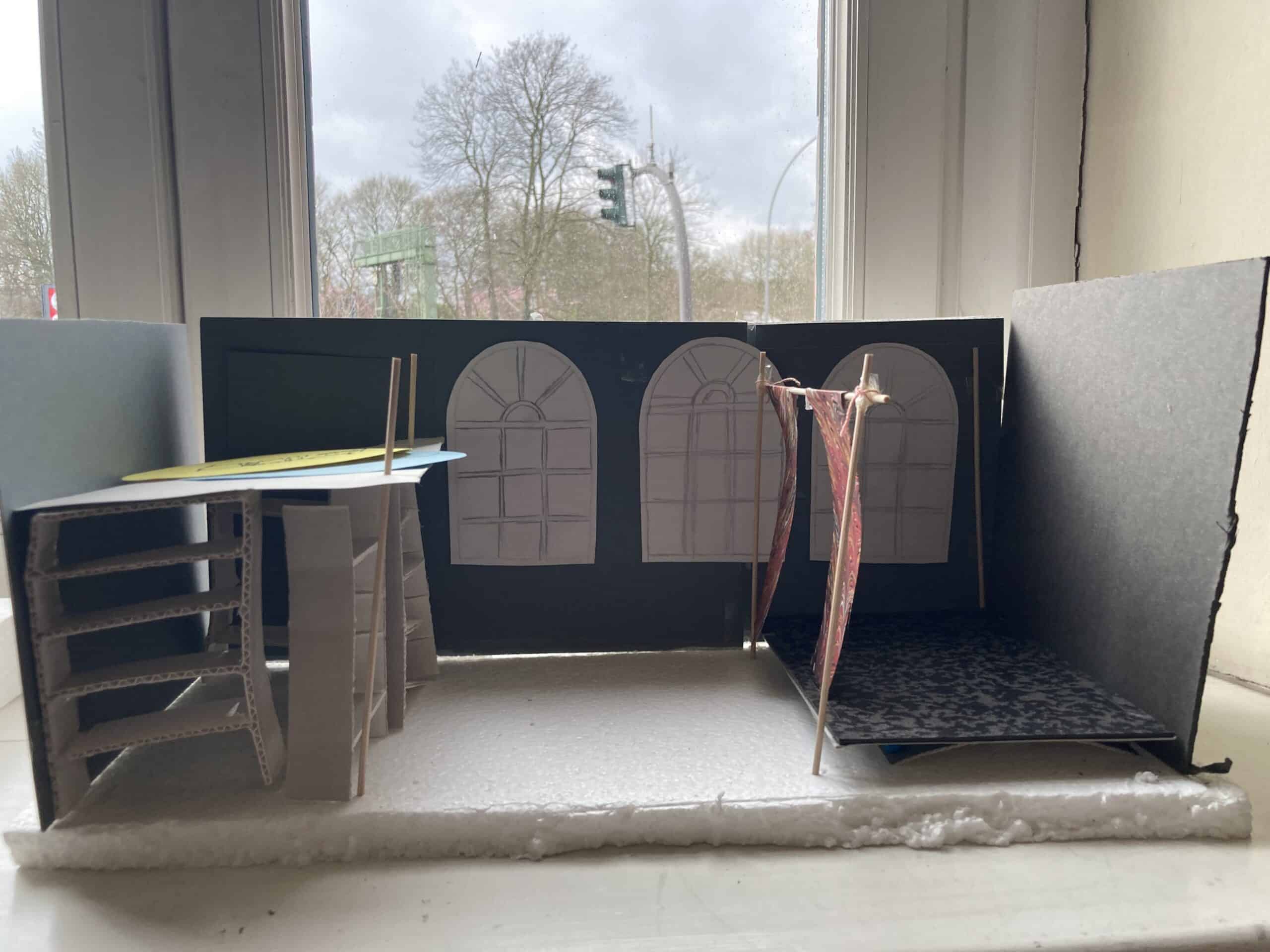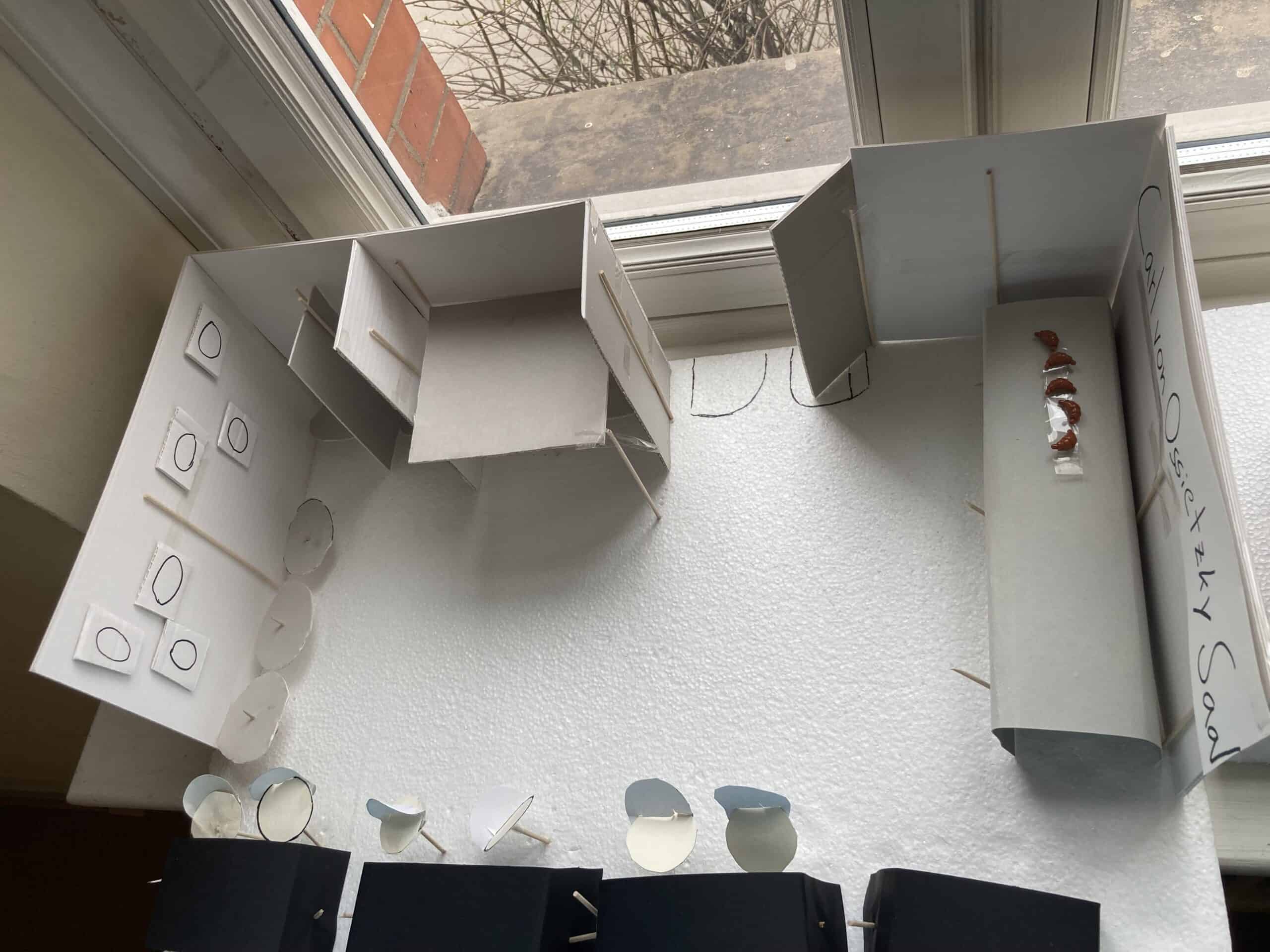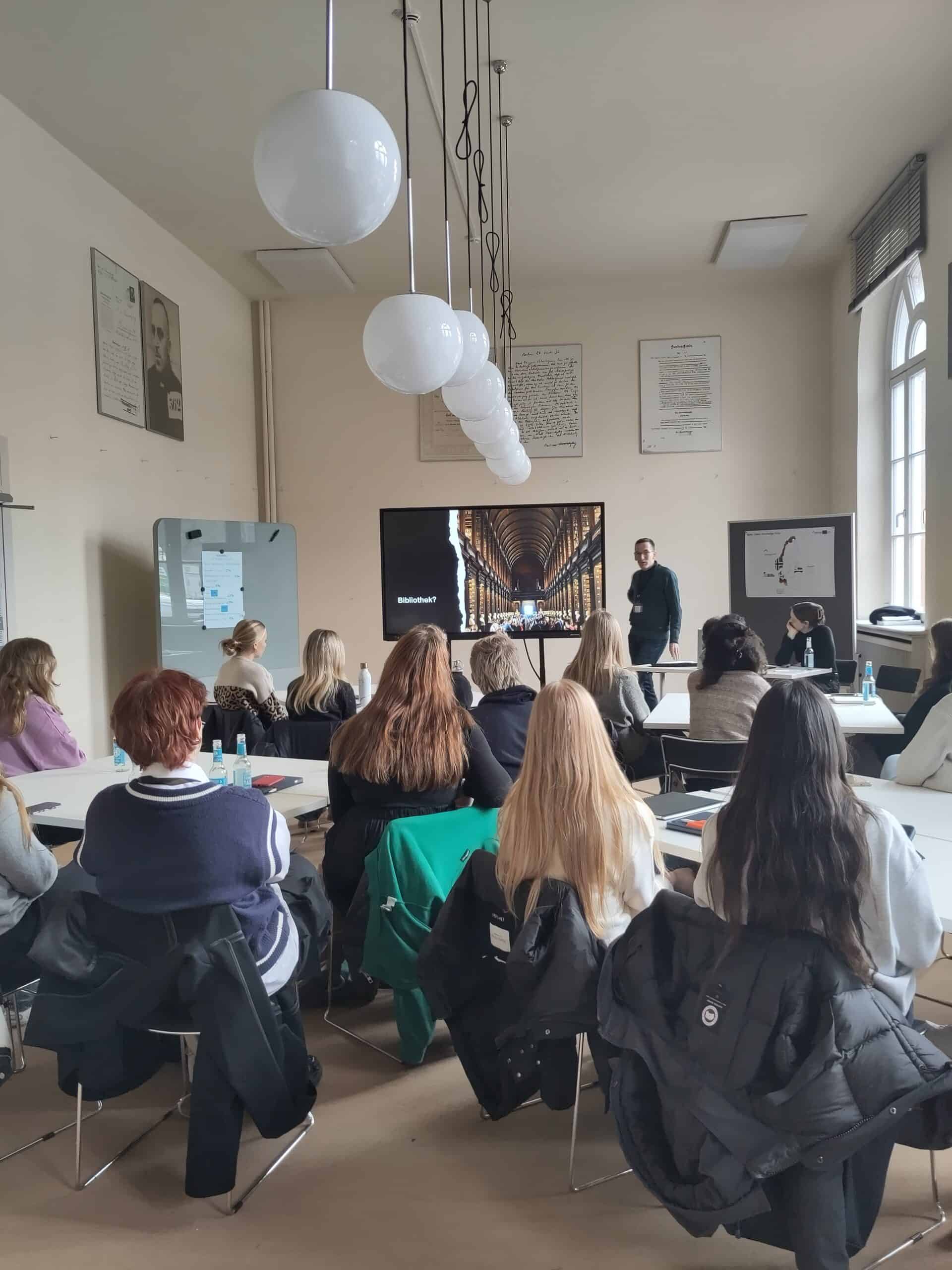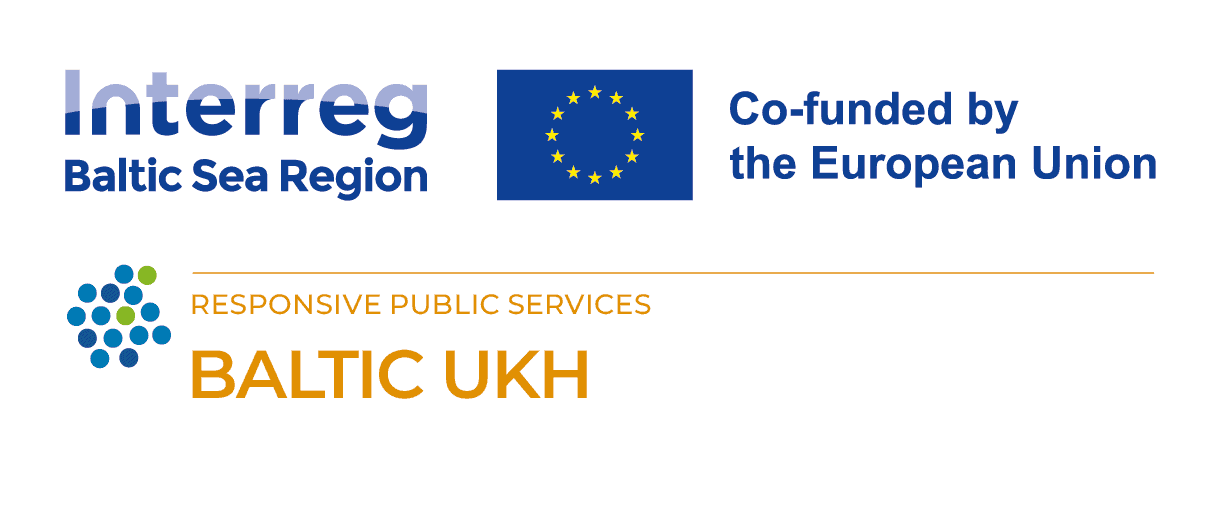
Prototyping the new Carl von Ossietzky Hall with high school students
27 March 2024
This mini-series with 11th graders from a local high school specializing in arts and architecture was split into two workshops. During a first workshop, it was decided to lay some groundwork by giving the students an overview of library design and architecture before moving on to the creative process of prototyping in the second workshop.
After arriving at the Carl von Ossietzky Hall and a short round of introductions, the start was a theoretical workshop with an input on library design, architecture and specific library-related functions and requirements. With a short quiz showing photos of famous but unconventional libraries new perspectives were offered on different facets of libraries (public and academic), moving away from the traditional image of big, quiet, almost reverend spaces with bookshelves, old books, fixed rows of tables and librarians hushing at visitors who move too loudly. Following this activity, a guided tour of the library was offered, focusing on open and multifunctional spaces, as well as on areas usually closed to the public but relevant for the functioning of the library. The workshop was finished by brainstorming what kind of spaces are currently missing in the library and how the Carl von Ossietzky Hall could complement the existing areas.
During the following three weeks, the class got an introduction on the basics of designing learning spaces fitting young peoples’ needs and were offered to visit other open spaces in the city.
Roughly a month later, the students were invited back to the library. As an icebreaker, the second workshop was started with a question on an activity, book or movie they had recently consumed, related to historical or political topics. This did not only help to illustrate the variety of historical and political points of encounter but also made students realise that, even though thinking that they don’t participate in such activities, they in fact do.
Then the methodological framework of Design Thinking as a creative and innovative problem-solving technique was presented and the different steps: define, research, ideate, prototype, choose, implement, learn were explained. Because short on time, the define and research phases were summarised and then students dove right into the process of ideation and prototyping. First they brainstormed what kind of historical-political education activities would be of interest and what they would want to do with the space. They expressed a need for visibility of the planned activities as well as a space in the library where they would feel welcome. With that in mind they started prototyping. Observing them building the models it became clear that this part was the most fun for them. It was impressing to see their creative potentials and detail orientation in the models they build in less than an hour. However, for a future Design Thinking workshop we would plan more time.
Combining results from the ideation and prototyping phase, the most important takeaways was the following: Space that welcomes everyone, especially young people is needed; advertisement and visibility of the activities related to historical and political topics is key; eventually an elevated area that could function as a stage as well as a water dispenser could be included; areas for studying but also for socializing are needed; some sort of flexibility of the space should be a given.
The group was invited to the opening of the new space in the fall of 2024 and to test out the space after its inauguration. Thus, students can evaluate if the implemented solution meets their needs and the library can learn from the process and adjust the design accordingly. The workshop was closed with a quick round of feedback.
Photos taken by Katja Reuter
Authors: Katja Reuter, Miriam Green



